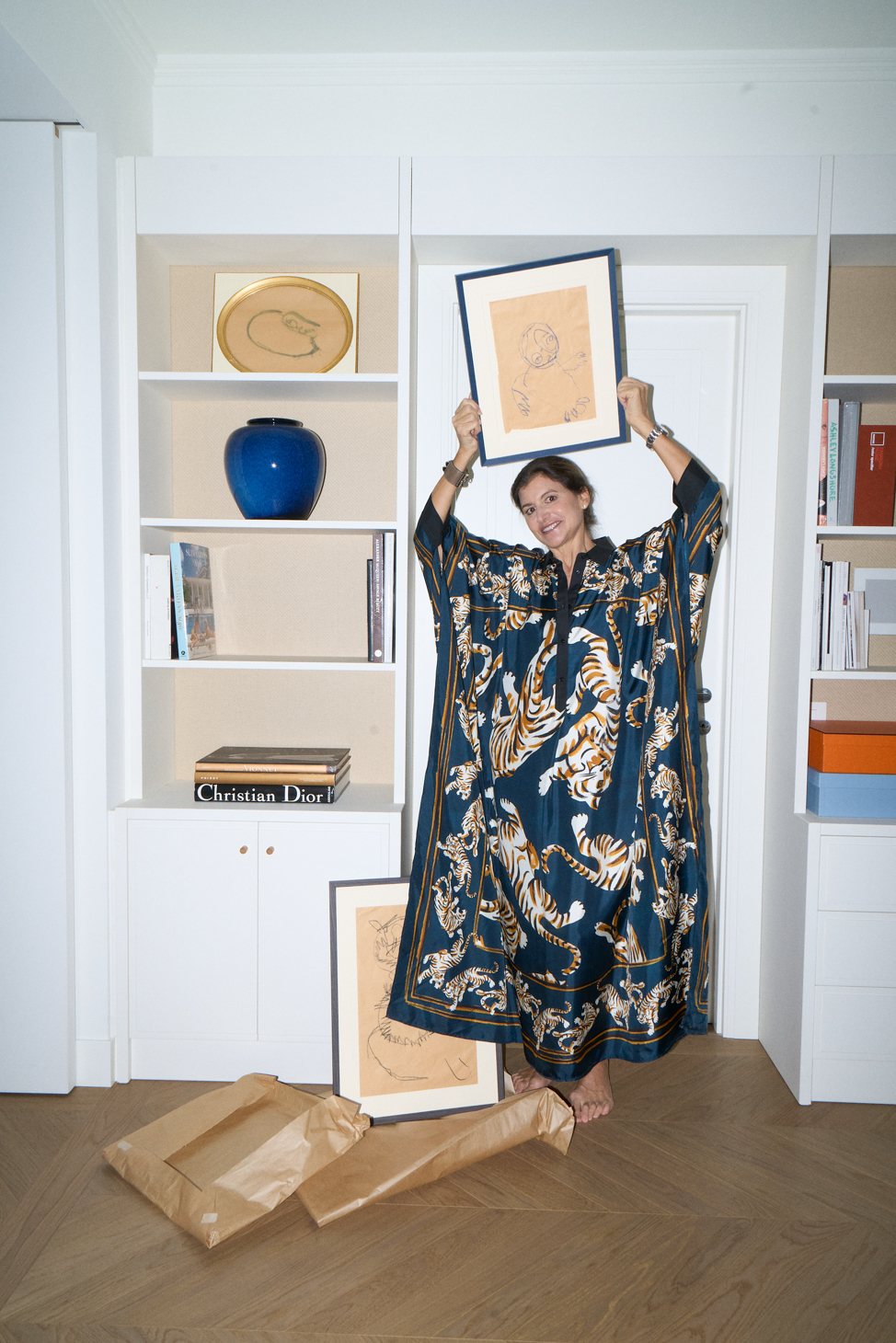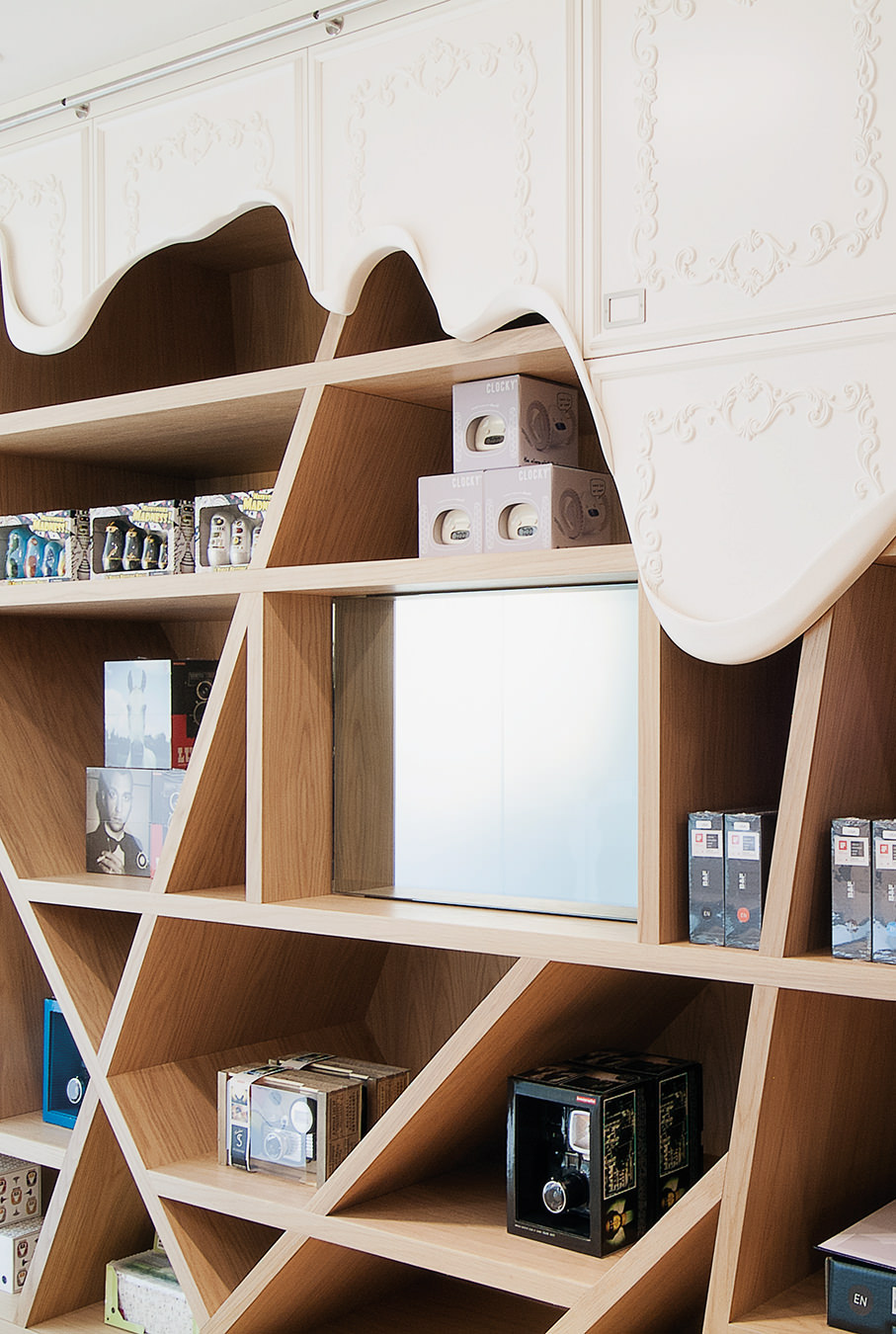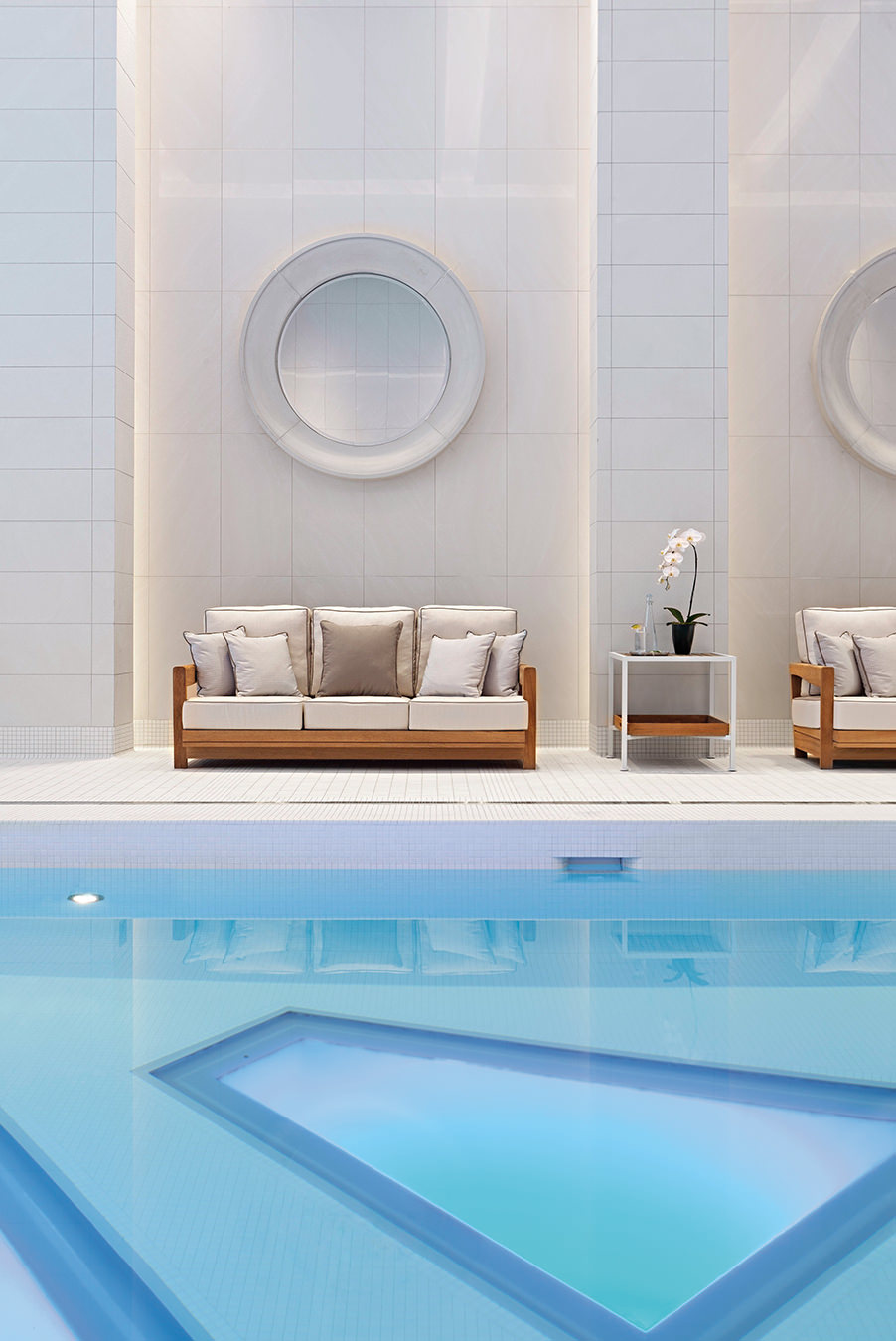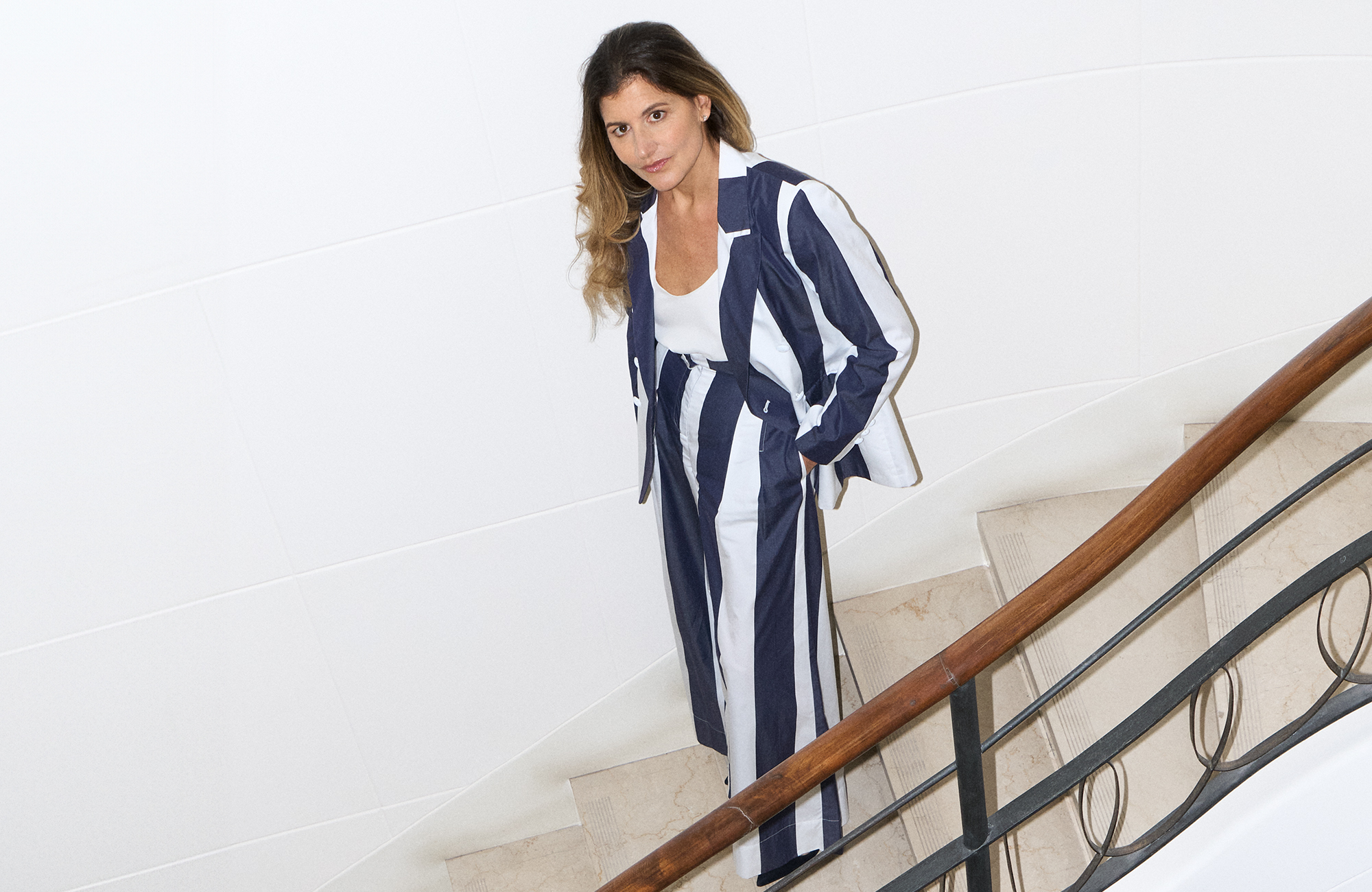
Sara Roka on Her Fashion Journey From Vancouver to Milan
A distinctive feminine look.
When Sara Roka packs for a weekend away, her case will contain “two dresses and eight pairs of shoes,” the fashion designer says. And in what was originally planned to be the office in her apartment in Milan is a makeshift shoe room with boxes and boxes of shoes—Roger Vivier, Manolo Blahnik, Christian Louboutin—stacked floor to ceiling, each with a Polaraid adhered so the contents are easily visible. Roka pulls out a box, a pair of classic Manolo pumps, which complement the navy-and-white-striped suit she is wearing from her Sara Roka spring/summer collection. “I feel more confident when I am wearing heels,” she says. “I don’t have a house, but I have the shoes,” she adds, tittering.
Roka hails from Vancouver, growing up on the North Shore, a community that is a compelling blend of cosmopolitan living and the great outdoors. Some of her earliest memories revolve around her interest in fashion. “I got the fashion bug from my mother,” she says. “I would watch her on the sewing machine. I would cut fabrics and sew by hand as she wouldn’t let me use the sewing machine at five years old. And then finally she let me use the machine, and I was crazy.” Roka had a collection of Barbies, but “I didn’t play with them,” she says. Rather, the budding fashion designer used Barbie as a mannequin.
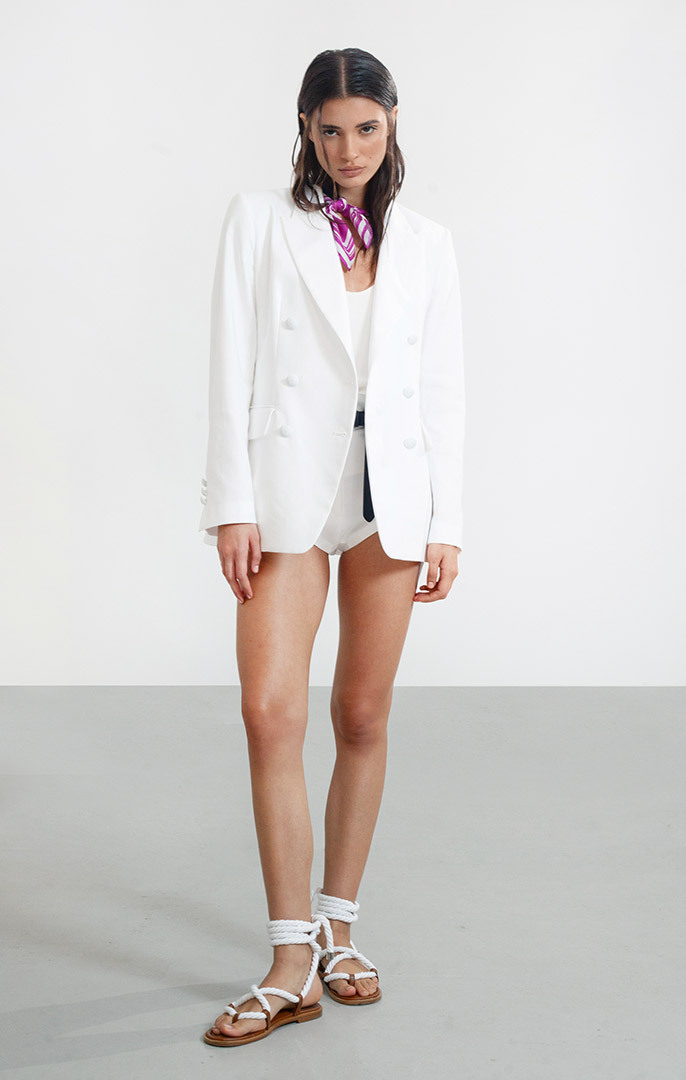
Among her fabric preferences are cotton piqué, poplin, silk twill, and organza. Everything is made in Italy.
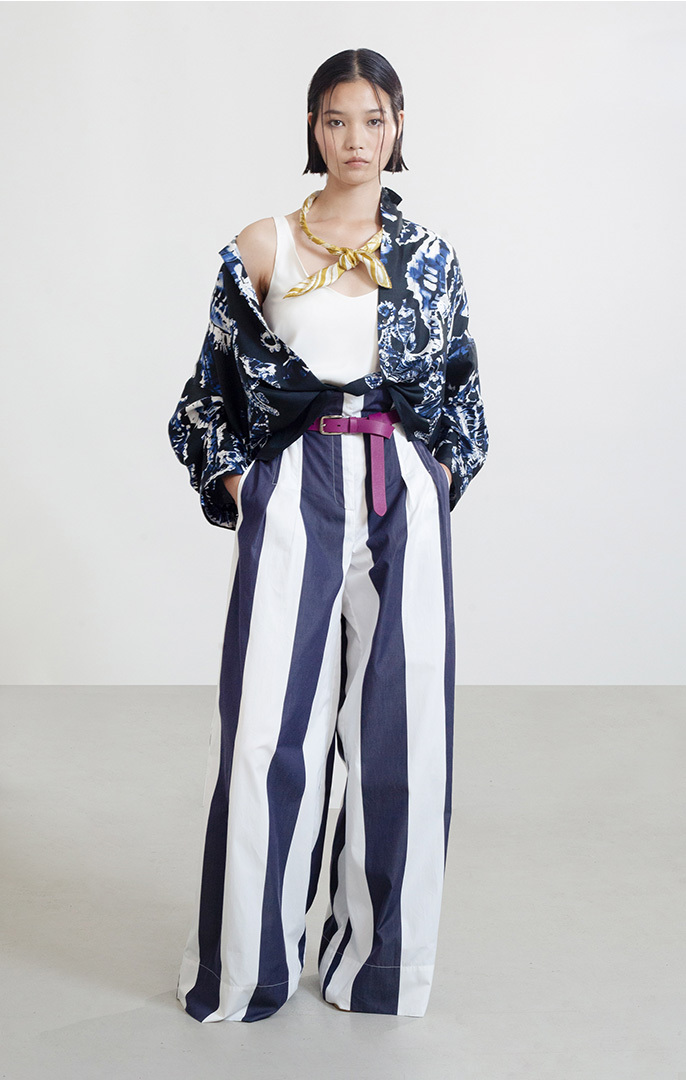
Prints are a Sara Roka trademark, made in Como and colourful.
Roka founded her eponymous line in 2010 with a capsule collection of shirts. “Everyone said, ‘You are a shirt designer,’ and I didn’t like that,” she recounts. “So I decided to do a full collection, and it became mostly dresses inspired by a borrowed men’s shirt.” That was in 2014, and she presented at a lot of trade shows. Pitti Donna was a catalyst, and Sara Roka was picked up by leading retailers in Italy, LuisaViaRoma and Sugar. Ten years on, and Sara Roka presents two collections a year during Milan fashion week and has a turnover of four million euros, with 80 per cent of her sales outside of Italy. Prints are a Sara Roka trademark, made in Como and very colourful. Among her fabric preferences are cotton piqué, poplin, silk twill, and organza. Everything is made in Italy. The Elena dress is the bestseller, a classic shirt-collar dress with an A-line full skirt, “a masculine cut contrasted with a refined femininity,” she says. All Sara Roka dresses are named, but “I have run out of names,” confesses the designer, who now sources baby books and modelling agencies for naming inspiration.
As a child, Roka didn’t know fashion designer was a profession.
___
During elementary school, “A teacher asked me what I wanted to do when I grew up, and I said, ‘I don’t know.’ The teacher moved on to my friend and asked the same question. Her response: ‘I want to be a fashion designer.’ And I was like, ‘That’s a job?’ And she looked at me and said, ‘What do you think Ralph Lauren is?’ And then the light switch went on. There was nothing else I wanted to do.” –Sara Roka
Roka has lived in Italy for over 25 years and switches between English and Italian with ease. Her fifth-floor apartment is a seven-minute walk from Via Montenapoleone, Milan’s most fashionable street, and is more hotel than home as she is constantly travelling. The only artwork that dresses the bare walls is of an owl she drew on what seems to be butcher paper when she was a child. “My mother framed it and sent it to me.” Roka has always been artistic. “I was always creative and not just with clothes,” she says. She liked painting and drawing and would stay in the art room for hours at school. “I was artsy and awkward. I wasn’t very good at socializing. I was 16 and looked like I was 12. I had zero self-confidence,” Roka says of the angst she felt during those teenage years. “For me, fashion was a way to fit in, and art gave me confidence.”
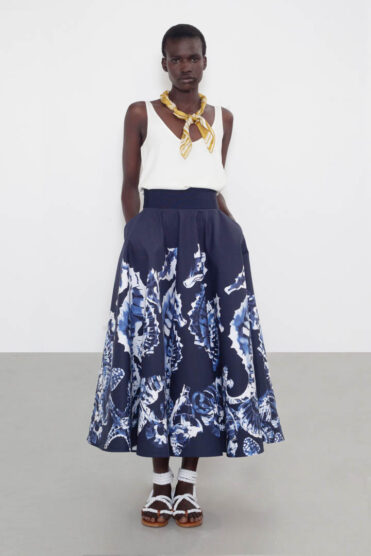
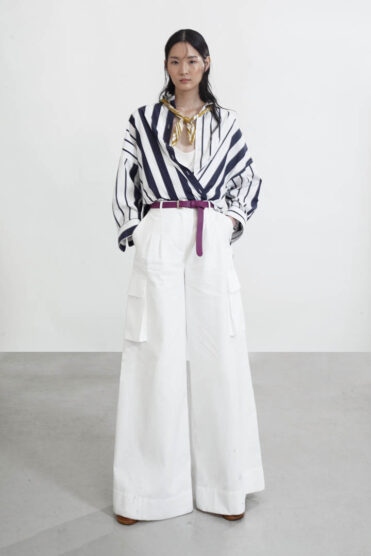
Roka wanted to go to Fashion Institute of Technology, FIT, in New York, but her mother thought otherwise, so she enrolled in fashion design at Kwantlen College. While studying, she worked as a lifeguard and in retail at Harry Rosen. But the desire to go to FIT didn’t wane, and once the two-year program at Kwantlen ended, she moved to New York. “I had this boyfriend that my mother hated. I think she said okay to go to FIT to get me away from the boyfriend.” From FIT, Roka moved on to Polimoda in Florence, and then she got an internship at Valentino. (Of her time at the storied fashion label in Rome circa 1997, she comments: “He [Valentino Garavani] would come in at 10 o’clock in the morning, and he would do his stuff and leave at two or three with [Giancarlo] Giammetti. They were really snobby—they would never come say hello to you. At the time, he had two pugs, and they would sit there. They looked just like him. ”) After a quick time back in New York, Roka returned to Italy for another internship, this time with Ruffo, which produced leather garments for Versace, Prada, Helmut Lang, Jil Sander—“everyone except for Gucci,” she says. And what was supposed to be a six-month stint turned into four years. She even got offered a job at Gucci, “but not in designing,” Roka says, “in product, and I didn’t want to do product.” And so no to the company with the interlocking Gs.
___
“When you work for other people, you have to sell your ideas and make them happy,” Sara Roka says of her time designing for others. “I just wanted to make my own decisions and do what I wanted. I always loved menswear from my time working at Harry Rosen, and I liked the poplin shirt. So I started doing a shirt collection.” Roka founded her eponymous line with a capsule collection of shirts.
A Sara Roka dress is feminine but decisive, “not a feminine soft,” says Roka, who likes bold colour and strong graphics. “I don’t really look good in my dresses,” she confesses. “I’m sporty and built straight. I design for a silhouette I always wanted: boobs, a small waist, and hips.”
As a kid, Roka used to “dream things in my head,” but now, leading her business, “my job is answering questions all day, making decisions, solving problems, and so I have become less creative, because it’s work,” she admits. “I wish I was at the creative level when I was five years old.” Roka seems to be hard on herself; as adults, we become more guarded and lose much of that spontaneity that breeds unfiltered creativity.
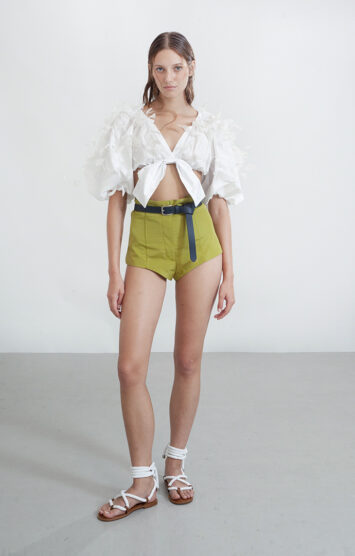
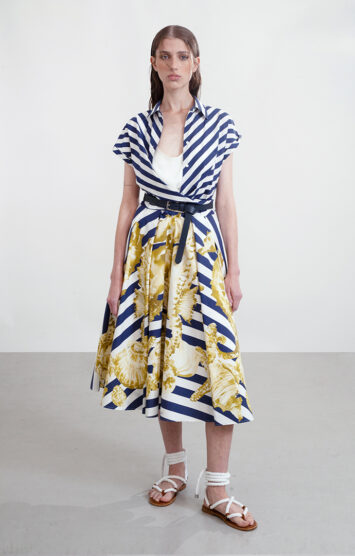
Roka is firmly planted in Italy but does ponder what would have happened had she remained in Canada. “When I was growing up, there wasn’t a support system for this industry. Fashion was seen as a waste of money,” she says, commenting on the lack of government support in her native country. “Artists in other art forms were supported, but not in fashion.” She compares that with Italy, where “the Italian mentality is fashion. Everybody knows fashion. Even the old ladies wear shoes from Prada. Fashion is in their blood. [The people] have this love for fashion, and when you are here, it kind of transmits to you.”
Over the years, Roka has put in the time and effort to build a desirable house of fashion—one in which she is doing what she loves.
